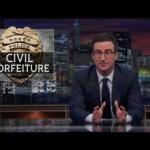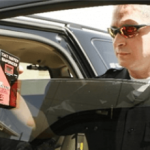OPINION
Defendants appeal as of right the forfeiture order in favor of the state under MCL 333.7521 et seq.; MSA 14.15(7521) et seq. The parties in interest include Douglas Mahon, the owner of the 1984 Chevrolet truck and part owner of the 1985 Mercedes Benz, and Barbara Melton, part owner of the 1985 Mercedes Benz.
Defendants argue that the prosecutor produced insufficient evidence to support an order of forfeiture. The Michigan forfeiture statute provides in relevant part:
(1) The following property is subject to forfeiture:
* * *
(d) A conveyance, including an aircraft, vehicle, or vessel used or intended for use, to transport, or in any manner to facilitate the transportation, for the purpose of sale or receipt of property described in subdivision (a) or (b) . . . .
To justify forfeiture, the government must show that probable cause exists to believe the vehicle was used to transport or facilitate the transportation of controlled substances and that probable cause continued to exist at the time suit was commenced. United States v Monkey, 725 F2d 1007 (CA 5, 1984). A probable cause finding for the forfeiture of an automobile requires only facts which would induce a fair-minded person of average intelligence and judgment to believe that the statute has been violated. In re Forfeiture of United States Currency, 164 Mich App 171, 178; 416 NW2d 700 (1987).
In the present case defendants contend that probable cause did not exist if the hearsay statements made by the police informant testified to by a surveillance officer to explain his actions had been properly suppressed at trial. However, federal courts have held that hearsay is admissible to prove probable cause in a forfeiture hearing. See United States v 1964 Beechcraft Baron Aircraft, 691 F2d 725, 728 (CA 5, 1982), cert den sub nom Preston v United States, 461 U.S. 914 (1983). In any event, the informant's tips contained sufficient indicia of reliability for use in the probable cause determination. Aguilar v Texas, 378 U.S. 108; 84 S Ct 1509; 12 L Ed 2d 723 (1964). The informant gave police specific information as to the cars used, the license plate numbers, and the destinations of the vehicles. All the information was corroborated by police surveillance. The facts in the present case were sufficient to induce a fair-minded person to believe that the two vehicles were being used to transport drugs. The cars were used to drive from house to house with Mahon getting out at each location with a briefcase in hand. A controlled buy of cocaine occurred at one of the locations and massive quantities of drugs and paraphernalia were found at another location. The Chevrolet truck was seen transporting prescription drugs and large boxes, suspected of containing drugs, from a drug store. The trial court found the explanations of Mahon and Melton not credible. We affirm the order of forfeiture.
Affirmed.





